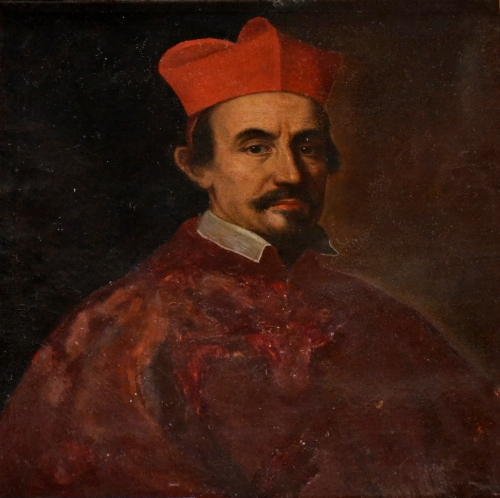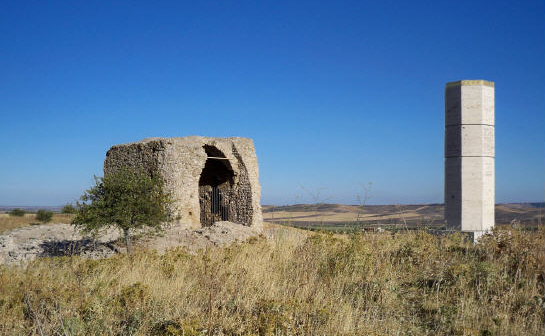|
Roman Catholic Archdiocese Of Boiano–Campobasso
The Archdiocese of Campobasso-Boiano () is a Latin Church archdiocese of the Catholic Church in the commune of Campobasso, the capital of the province of Campobasso, in the region of Molise in Southern Italy. It became an archdiocese in 1973 and a metropolitan see in 1976. In 1927, the episcopal seat and residence of the bishop of the diocese of Boiano was transferred to Campobasso, and the diocese was renamed diocese of Boiano-Campobasso. It was suffragan (subordinate) ecclesiastically to the archdiocese of Benevento. History The name Laurentius often appears as the earliest known bishop of Bojano, and a participant in the third Roman synod of Pope Symmachus (498–514) in 501. It has been pointed out, however, that the manuscripts have variants: ''Bovianensis, Bobianensis, Boensis, Bonensis, Bononiensis, Bonomensis, Vovianensis, Vohianensis, Vivianensis.'' Giuseppe Cappelletti rejected the attribution of Laurentius to Bojano, and suggested Bobbio instead. But, as Francesco ... [...More Info...] [...Related Items...] OR: [Wikipedia] [Google] [Baidu] |
Catholic Church
The Catholic Church (), also known as the Roman Catholic Church, is the List of Christian denominations by number of members, largest Christian church, with 1.27 to 1.41 billion baptized Catholics Catholic Church by country, worldwide as of 2025. It is among the world's oldest and largest international institutions and has played a prominent role in the history and development of Western civilization.Gerald O'Collins, O'Collins, p. v (preface). The church consists of 24 Catholic particular churches and liturgical rites#Churches, ''sui iuris'' (autonomous) churches, including the Latin Church and 23 Eastern Catholic Churches, which comprise almost 3,500 dioceses and Eparchy, eparchies List of Catholic dioceses (structured view), around the world, each overseen by one or more Bishops in the Catholic Church, bishops. The pope, who is the bishop of Rome, is the Papal supremacy, chief pastor of the church. The core beliefs of Catholicism are found in the Nicene Creed. The ... [...More Info...] [...Related Items...] OR: [Wikipedia] [Google] [Baidu] |
Gastald
A gastald (Latin ''gastaldus'' or ''castaldus''; Italian ''gastaldo'' or ''guastaldo'') was a Lombard official in charge of some portion of the royal demesne (a gastaldate, ''gastaldia'' or ''castaldia'') with civil, martial, and judicial powers. By the '' Edictum Rothari'' of 643, the gastalds were given the civil authority in the cities and the reeves the like authority in the countryside. Under the Lombard dominion, territories were delimited by ''giudicati'' or "judgments" among the several gastalds. From the immediate region of Parma and of Piacenza, numerous such ''giudicati'' survive, which cover the range of Lombard rule. The documents follow the same formalized structure, of which one between the gastald Daghiberto and the gastald Immo was adjudged by Adaloald, at Ticino, November 615. As paid officials with direct allegiance to the roving Lombard kings, whose seat was nominally at Pavia, the gastalds were often in conflict with the dukes, the great Lombard territoria ... [...More Info...] [...Related Items...] OR: [Wikipedia] [Google] [Baidu] |
Pope Pius XI
Pope Pius XI (; born Ambrogio Damiano Achille Ratti, ; 31 May 1857 – 10 February 1939) was head of the Catholic Church from 6 February 1922 until his death in February 1939. He was also the first sovereign of the Vatican City State upon its creation on 11 February 1929. Pius XI issued numerous encyclicals, including ''Quadragesimo anno'' on the 40th anniversary of Pope Leo XIII's groundbreaking social encyclical ''Rerum novarum'', highlighting the capitalistic greed of international finance, the dangers of Atheism, atheistic socialism/communism, and social justice issues, and ''Quas primas'', establishing the feast of Christ the King in response to anti-clericalism. The encyclical ''Studiorum ducem'', promulgated 29 June 1923, was written on the occasion of the 6th centenary of the canonization of Thomas Aquinas, whose thought is acclaimed as central to Catholic philosophy and theology. The encyclical also singles out the Pontifical University of Saint Thomas Aquina ... [...More Info...] [...Related Items...] OR: [Wikipedia] [Google] [Baidu] |
Celestino Bruni
Celestino Bruni, O.S.A. also Celestino Bruno (1585 – 31 May 1664) was a Roman Catholic prelate who served as Bishop of Boiano (1653–1664). ''(in Latin)''''Magistri Coelestini Bruni ... Ord. eremitarum sancti Augustini ... Quodlibeticarum disputationum pars prior theologica''. . Neapoli: typis Iacobi Gaffari, 1641. References External links and additional sources * (for Chronology of Bishops) * (for Chronology of Bishops) 1585 births 1664 deaths 17th-century Italian Roman Catholic bishops Bishops appointed by Pope Innocent X {{17C-Italy-RC-bishop-stub ... [...More Info...] [...Related Items...] OR: [Wikipedia] [Google] [Baidu] |
Carlo Carafa (bishop Of Boiano)
Carlo Carafa (died 29 September 1608) was a Roman Catholic prelate who served as Bishop of Boiano (1572–1608) ''(in Latin)'' and Bishop of Guardialfiera (1567–1572). ''(in Latin)'' Biography On 23 May 1567, Carlo Carafa was appointed during the papacy of Pope Pius V as Bishop of Guardialfiera. On 1 June 1567, he was consecrated bishop by Scipione Rebiba, Cardinal-Priest of Sant'Angelo in Pescheria, with Giulio Antonio Santorio, Archbishop of Santa Severina, and Egidio Valenti, Bishop of Nepi e Sutri, serving as co-consecrators. On 4 July 1572, he was appointed during the papacy of Pope Gregory XIII Pope Gregory XIII (, , born Ugo Boncompagni; 7 January 1502 – 10 April 1585) was head of the Catholic Church and ruler of the Papal States from 13 May 1572 to his death in April 1585. He is best known for commissioning and being the namesake ... as Bishop of Boiano. He served as Bishop of Boiano until his death on 29 September 1608. References External li ... [...More Info...] [...Related Items...] OR: [Wikipedia] [Google] [Baidu] |
Franciotto Orsini
Franciotto Orsini (1473–1534) was an Italian Roman Catholic cardinal. Biography A member of the Orsini family, Franciotto Orsini was born in Rome in 1473, the son of Orso Orsini di Monterotondo and Costanza Savelli. He was a nephew of Pope Leo X on his father's side. Orsini was educated in Florence by Lorenzo de' Medici. Early in his life, he participated in several military exercises, fighting against the forces of Cesare Borgia. Moving to Rome, he became a protonotary apostolic. His uncle Pope Leo X made him a cardinal deacon in the consistory of 1 July 1517. He received the red hat and the deaconry of San Giorgio in Velabro on 6 July 1517. He was administrator of the see of Nicastro from 15 September 1517 to 5 May 1518. He became archpriest of St. Peter's Basilica in 1520, [...More Info...] [...Related Items...] OR: [Wikipedia] [Google] [Baidu] |
Silvio Pandoni
Silvio (, ) is an Italian male name, the male equivalent of Silvia. Sílvio is a variant of the name in Portuguese. It is derived from the Latin " Silvius", meaning "spirit of the wood," and may refer to: People * Silvio Benítez (born 1935), former Paraguayan soccer and basketball player and coach * Silvio Berlusconi (1936–2023), Italian politician, entrepreneur, and media magnate * Silvio Branco (born 1966), Italian boxer * Silvio O. Conte (1921–1991), US politician and member of the House of Representatives * Silvio De Sousa (born 1998), Angolan basketball player * Silvio Fernández (other), multiple people * Silvio Frondizi (1907–1974), Argentine lawyer * Silvio Gai (1873–1967), Italian politician * Silvio Gava (1901–1999), Italian politician * Silvio Gazzaniga (1921–2016), Italian sculptor * Silvio Gesell (1862–1930), German entrepreneur, economist, and founder of Freiwirtschaft economic model * Silvio Horta (1974–2020), American TV writer and ... [...More Info...] [...Related Items...] OR: [Wikipedia] [Google] [Baidu] |
Frederick II, Holy Roman Emperor
Frederick II (, , , ; 26 December 1194 – 13 December 1250) was King of Sicily from 1198, King of Germany from 1212, King of Italy and Holy Roman Emperor from 1220 and King of Jerusalem from 1225. He was the son of Emperor Henry VI, Holy Roman Emperor, Henry VI of the Hohenstaufen dynasty (the second son of Emperor Frederick Barbarossa) and Queen Constance I of Sicily of the Hauteville dynasty. Frederick was one of the most powerful figures of the Middle Ages and ruled a vast area, beginning with Sicily and stretching through Italy all the way north to Germany. Viewing himself as a direct successor to the Roman emperors of antiquity, he was Holy Roman Emperor, Emperor of the Romans from his papal coronation in 1220 until his death; he was also a claimant to the title of King of the Romans from 1212 and unopposed holder of that monarchy from 1215. As such, he was King of Germany, King of Italy, of Italy, and King of Burgundy, of Burgundy. At the age of three, he was crowned King ... [...More Info...] [...Related Items...] OR: [Wikipedia] [Google] [Baidu] |
Roman Catholic Diocese Of Ariano Irpino-Lacedonia
The Diocese of Ariano Irpino-Lacedonia () is a Latin diocese of the Catholic Church. It is a suffragan of the Archdiocese of Benevento. In 1986 the Diocese of Ariano and the Diocese of Lacedonia merged to form the current diocese of Ariano Irpino-Lacedonia,"Diocese of Ariano Irpino-Lacedonia" '' Catholic-Hierarchy.org''. David M. Cheney. Retrieved February 29, 2016"Diocese of Ariano Irpino–Lacedonia" ''GCatholic.org.'' Gabriel Chow. Retrieved February 29, 2016 which comprises twenty ... [...More Info...] [...Related Items...] OR: [Wikipedia] [Google] [Baidu] |
Roman Catholic Diocese Of Fiorentino
The Roman Catholic Diocese of Fiorentino (Lat.: ''Florentinum''), named after its see (Castel) Fiorentino (di Puglia), was a medieval Latin Rite bishopric (1059–1391). It was located about four miles southwest of the present 'commune' (municipality) of Torremaggiore. The name has been restored as a titular see. History The fortress of Castel Fiorentino, like Troia, Montecorvino, Civitate, Lesina, and Draconara in the Capitanata area, was probably erected not long after his victory over the Apulians in 1018, by the Italian catapan (Byzantine governor) Basilio Boioannes, as a Byzantine ring opposing the expansionist Lombard duchy of Benevento. The diocese of Fiorentino started as a suffragan of the Patriarchate of Constantinople, using its Greek rite, until Rome's Latin rite was introduced by the conquering Normans mid eleventh century. On 12 July 1053, Pope Leo IX issued the bull "Cum Summae Apostolicae", in which he confirmed the privileges and possessions of the Church of ... [...More Info...] [...Related Items...] OR: [Wikipedia] [Google] [Baidu] |
Roman Catholic Diocese Of Lucera–Troia
The Diocese of Lucera-Troia (), sometimes called Nocera, is a Latin Church, Latin diocese of the Catholic Church in Apulia, in southern Italy, with its episcopal seat at Lucera Cathedral. The diocese reached its present configuration in 1986, by combining the older diocese of Lucera with the diocese of Troia,"Diocese of Lucera-Troia" ''Catholic-Hierarchy.org''. David M. Cheney. Retrieved February 29, 2016"Diocese of Lucera-Troi" ''GCatholic.org''. Gabriel Chow. Retrieved February 29, 2016 the seat of which was Troia Cathedral, now a co-cathedral of the united diocese. Ecclesiastical history Lucera ...[...More Info...] [...Related Items...] OR: [Wikipedia] [Google] [Baidu] |
Pope Alexander II
Pope Alexander II (1010/1015 – 21 April 1073), born Anselm of Baggio, was the head of the Roman Catholic Church and ruler of the Papal States from 1061 to his death in 1073. Born in Milan, Anselm was deeply involved in the Pataria reform movement. 1061 papal election, Elected according to the terms of his predecessor's bull, ''In nomine Domini'', Anselm's was the first election by the cardinals without the participation of the people and minor clergy of Rome. He also authorized the Norman Conquest, Norman Conquest of England in 1066. Early life and work Anselm was born in the parish of Cesano Boscone in the town of Corsico some from Milan of a noble family. The family took its name from Baggio (district of Milan), Baggio, a suburb of Milan, where the family held the office of "captain". According to the ''Liber pontificalis'', his father's name was Anselmus or Ardericus. Contemporary sources do not provide any information on where Anselm might have obtained his education ... [...More Info...] [...Related Items...] OR: [Wikipedia] [Google] [Baidu] |



